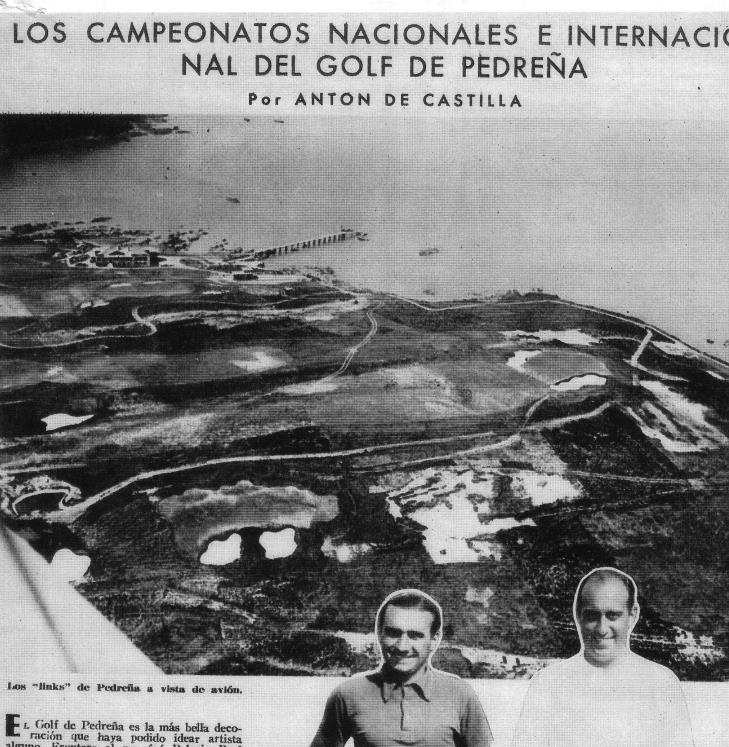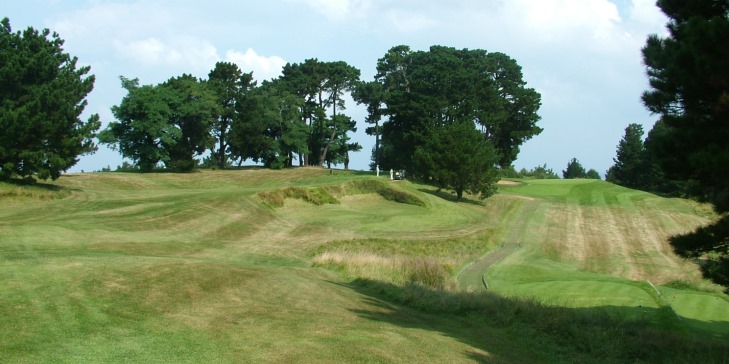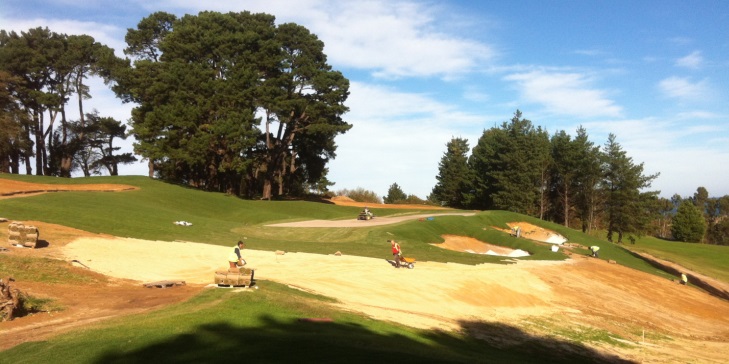British architect David Williams has completed a project to recreate one of Harry Colt’s original greens at Real Golf de Pedreña on Spain’s north coast. Opened in 1928, the course, situated next to the village of Pedreña, is now most famous as the home of Seve Ballesteros, who learned the game there.
“Pedreña exhibits many of Colt’s endearing qualities, with, for example greens eight, 13 and 14 all sited dramatically on the skyline,” said Williams. “Perhaps the greatest – and definitely the most dramatic – complex was that of the short par three tenth, a wide but shallow putting surface guarded by two cavernous bunkers to the front and three grassy hollows to the rear.”
Although golfers could still see Colt’s dramatic original green complex, it has been out of play since the mid 1970s, when the club gained additional land and extended the par four ninth and eleventh into par five holes, A new ninth green and new eleventh tee were built together with a completely new, longer par three tenth. “That new tenth became probably the least liked on the layout – an uphill hole of approximately 180 metres to a small green falling off on three sides and tree lined on the other,” said Williams, who has been consulting at Pedreña for several years. “When we were informed by the club that holes nine, ten and eleven were programmed for reconstruction this winter, we felt strongly that something had to be done to the abandoned Colt tenth green which has stood forlornly in the carry of the eleventh hole for the last 40 years.”
 This 1933 article shows the tenth green with two cavernous bunkers – and the general lack of trees on the course
This 1933 article shows the tenth green with two cavernous bunkers – and the general lack of trees on the course
Recreating the green in its original position would either mean shortening the eleventh back to a par four or moving the eleventh tee, which would produce a crossover between the tenth and eleventh. Instead, Williams suggested to the club the recreation of the green complex to be virtually identically to the Colt original, but repositioned in the approach to the 1970s green. “Fortunately, the existing land in that approach, an area approximately 60 metres by 40 metres and with a 5-6m left to right sideslope, mirrored almost precisely the land on which Colt laid out his original green complex,” he said.
The green has now been recreated to the original design, the only change being the continuation of the two capes, which divided the three grass hollows to the rear of the green, further onto the green than in the Colt original. “In that way, players hitting to the easier left hand (and unguarded) side have a more difficult putt when the flag is positioned on the right half of the putting surface,” said Williams.
 This image shows the area before reconstruction. Colt’s green is on the left, while the 1970s replacement is in the distance
This image shows the area before reconstruction. Colt’s green is on the left, while the 1970s replacement is in the distance
Construction work took place during September and October, and was handled by Spanish contractor Garden & Golf. “We also reconstructed all the tees on the three holes, as well as building 14 bunkers, many in their original positions, but many new or repositioned to create a more strategic element to the two par fives,” said Williams. “When the holes were extended in the 1970s, it appears essentially they were just purely lengthened, and the eleventh in particular had a fairly hazard-free fairway and very wide entrance to the green. New and enhanced bunkering has created better challenges on both holes, both now truly strategic ‘risk and reward’ tests.
 The recreation of Colt’s green during construction
The recreation of Colt’s green during construction
“When Colt designed the course in the 1920s, the site was wide open with very few trees. In the intervening years, the vast majority of holes have become tree lined, creating interesting golfing challenges, but often blocking up the open views across the Bay of Santander. In parallel with the construction work, removal of many trees has been undertaken, opening up the holes but, equally importantly, opening up the dramatic views of the sea and mountains which surround the course.”